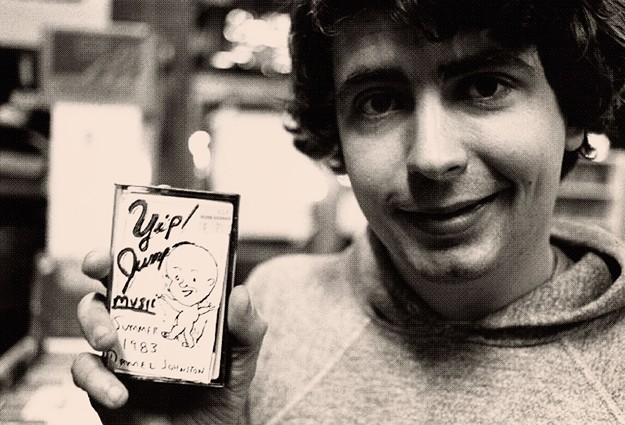ACCENT’s Web Content Editor, Angelica Ruzanova, gives us an in-depth look into Daniel Johnston’s “I Live My Broken Dreams” exhibition at The Contemporary Austin’s Jones Center.
Story by Angelica Ruzanova
Edited by Pete Ramirez
Truth, deep-seated within each one of us, finds its own way of expressing itself. For the late Austin artist and musician Daniel Johnston, it manifested through personified ideas in his imaginary – and perhaps very real – scattered world.
Upon my first visit to the installation located within The Contemporary Austin’s Jones Center museum on Congress Avenue active from September 11 to March 20, my friend and I overheard a gentleman admiring the hung pieces on the walls in awe. He was led by a guide and was in a rush, but it was clear how much every display meant to him.
We later determined the visitor to be Johnston’s best friend, David Thornberry. Thornberry is also an artist and painted the Jones Center exhibition’s front entrance portrait in Johnston’s memory. The acrylic painting on 24″ x 30″ canvas portrayed Johnston in his McDonald’s uniform from his days working there in the 1980s.
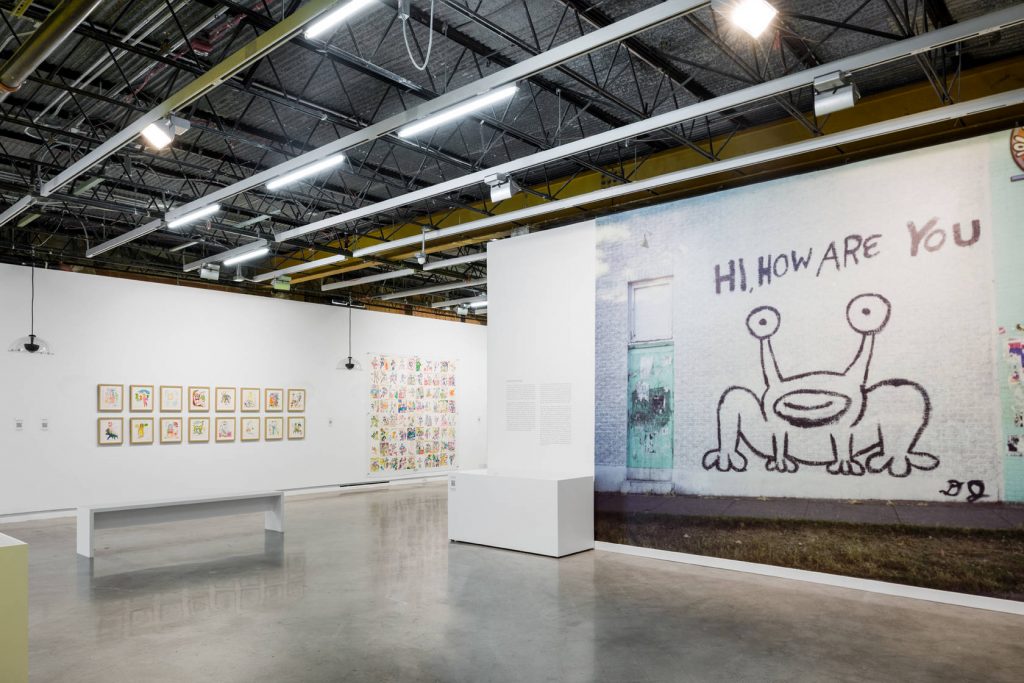
The guide leading Thornberry, Tori Sal, gave us insight into the museum’s collaboration with individuals and organizations who helped make the exhibit.
“The Contemporary worked with the Daniel Johnston Foundation and collaborated with No Comply – the skating company downtown, as well as Vans and a lot of local businesses,” Sal said. “We worked with Austin Books and Comics to recreate this comic book in his style to celebrate him, and the mural on the side of our building was premiered on Daniel Johnston’s day.”
The collection of handwritten letters, poems, and symbolic artwork showcase the progression of Johnston’s rugged fate, and the newspaper features with authentic cassette tapes are an exploration beyond merely make-believe worlds.
The displayed work of the late songwriter and cartoonist is a deep dive inside the heart, mind, and soul of an intuitively-driven prodigy of outsider culture and underground music.
The Person
“Well it just goes to show that we are all on our own
Scrounging for our own share of good luck.”
Lyrics from “Grievances” in Daniel Johnston’s album “Songs of Pain.”
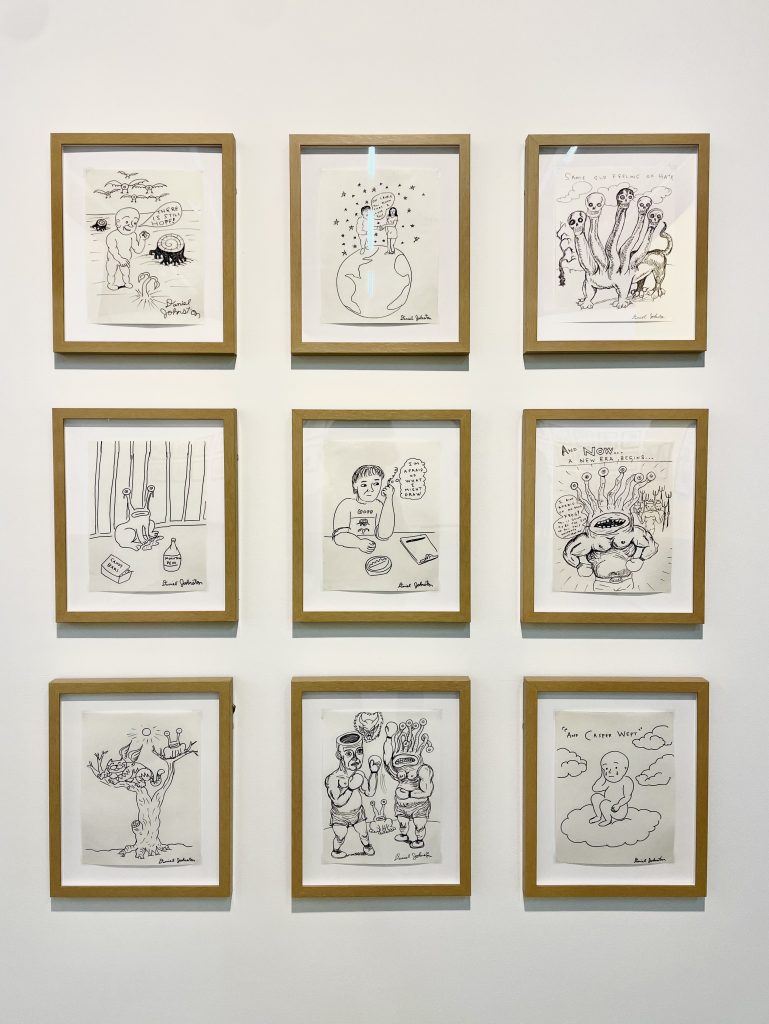
The innate drive to create began early in Johnston’s childhood. His predominantly Christian household and the popular culture of the time sparked an interest to draw random sketches and recreate the likeness of various comic book characters in his notebooks.
Elements paralleling Van Gogh’s art style, Cubism, and recurring appraisals of Lennon of the Beatles shaped Johnston’s style into what would become a proliferation of unfiltered thoughts inspired by his early idols. As a young student, Johnston began writing songs to amuse his classmate for whom he’d formed an unrequited love.
When Johnston moved to Austin in the early 1980s, the young artist would hand out homemade tapes, recorded individually on a portable device, to strangers and friends while working at a McDonald’s near the University of Texas at Austin. It was through Johnston’s method of making direct connections with people in Austin that he began recruiting a local audience.
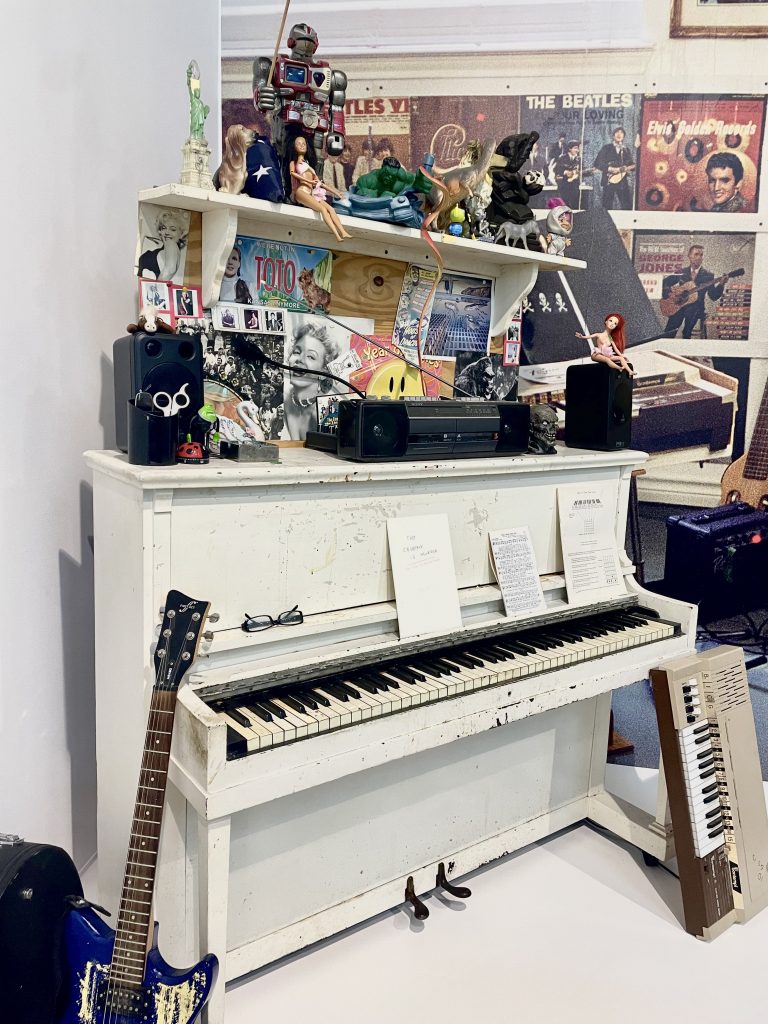
As word of his music spread, so did his cult-like following. Johnston’s childish-like voice accompanied by often sorrowful and sincere lyrics yielded a wave of national recognition for its alternative feel, especially after it was featured on a 1985 MTV episode of “The Cutting Edge”. The title of his first song on television, “Broken Dreams” premiered in front of a live audience. Among his fans and supporters, Johnston was acknowledged as an inspiration to other artists and bands such as Nirvana’s Kurt Cobain, Sonic Youth, and Yo La Tengo.
Johnston’s mental health began deteriorating around the time of his rise to fame. His unresolved love for his lifelong muse and trips in and out of psych wards undoubtedly made Johnston live his “broken dreams.”
The Art
“The sun shines brightly on my soul
But, there’s something missing.”
Lyrics from “Mind Contorted” in Daniel Johnston’s album “Fun.”
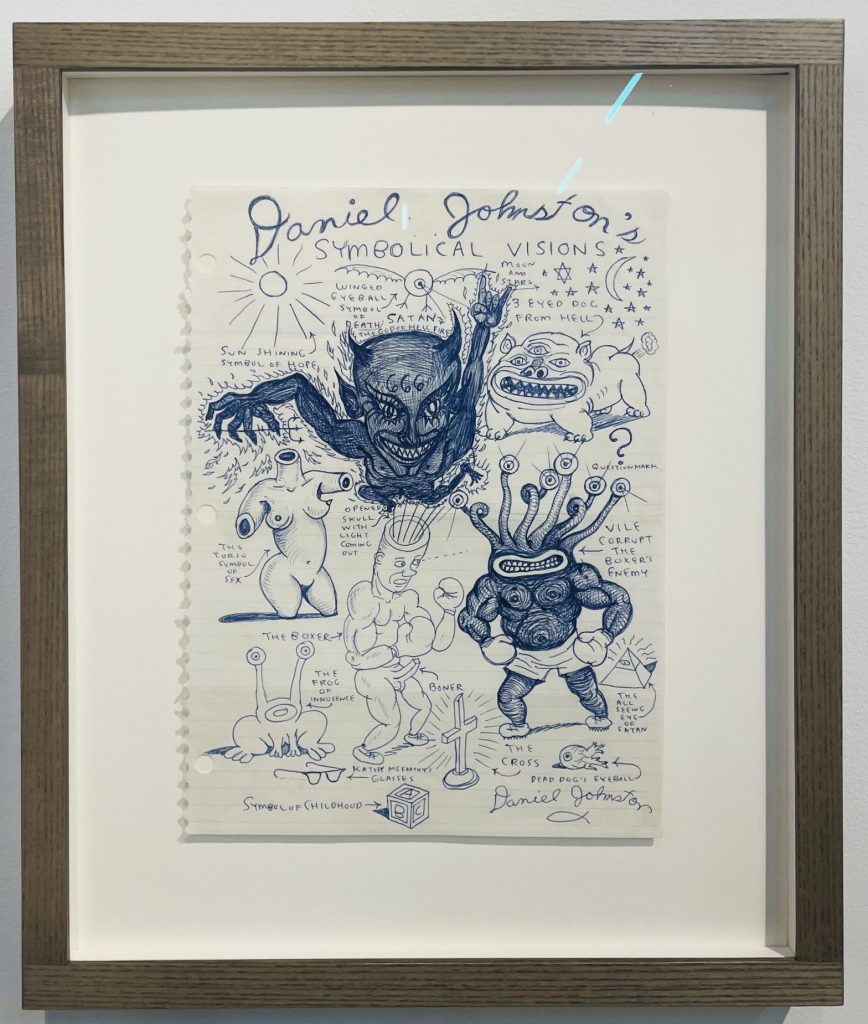
Johnston’s work is a deep dive inside a scattered mind.
One of my favorite pieces, “Daniel Johnston’s Symbolical Visions,” reveals so much about the inner workings of his often religiously interpreted delusions.
Demon figures, bodies with cut-off limbs, void heads, and imaginative frog-like creatures with many (and I mean many) eyeballs are common themes in the work displayed at the installation.
Every time I laid eyes on one of Johnston’s sketched pieces, the amount of detail enveloped me in its metaphorical universe of events that were either real, made-up, or a mixture of both.
Whether the framework of these anarchic universes is what led to Johnston’s displaced reality or if the digression in his mental state was what the drawings depicted, the line between art and mental illness is blurred.
In the self-titled excerpt “The Origin of the Dead Dog’s Eyeball,” Johnston recalls various memoirs on the distinguishable side of a double-sided paper handwritten in blue ink. The recollection of first learned word “eye,” inspiration from a Beatles song lyric, and a vivid memory of a road trip during his childhood make it possible for him to jump through timelines of his life.
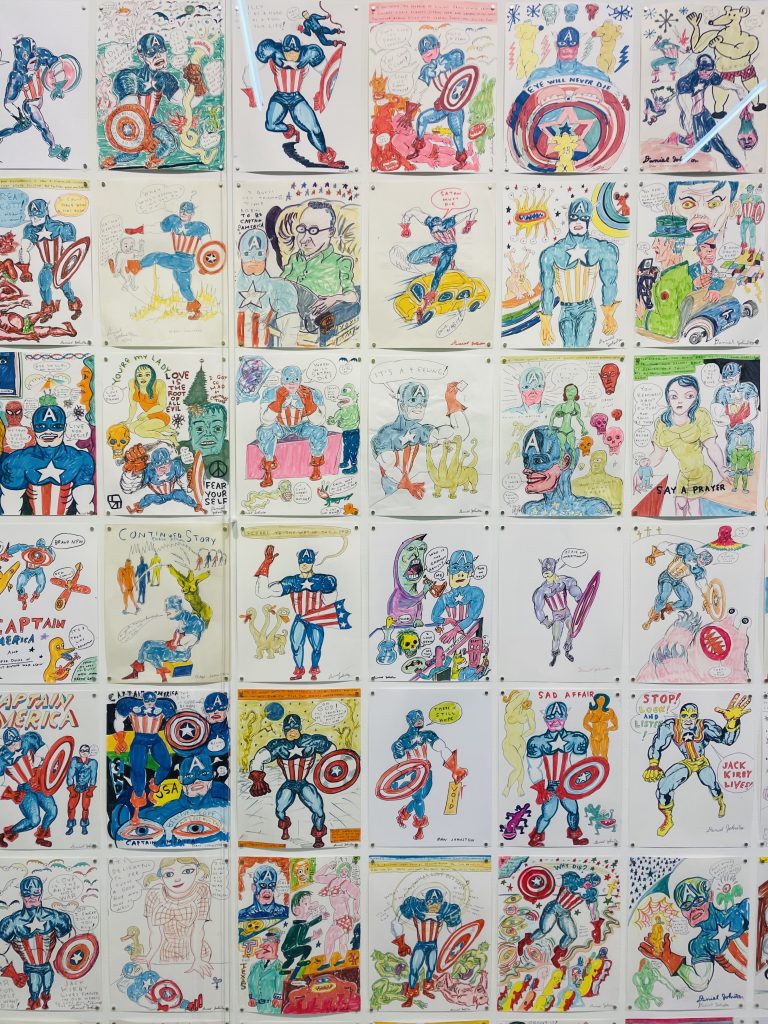
In his Captain America extensive collection of comic-like drawings with colorful markers, he implies hyper self-awareness through satirical comics and phrases like “fear yourself,” “it’s cold to be alive,” and “there is still hope.”
A lot of Johnston’s artwork is a product of isolation, and so he often speaks of existentialism and makes naive jokes about serious issues or situations. It is simultaneously strange, captivating, and raw. And yet at times, it’s relatable, refreshing, and original.
The Phenomenon
“When I was a little kid
And all the people they looked big
I never exactly understood
How to tell the trees from the wood.”
Lyrics from “Joy Without Pleasure” in Daniel Johnston’s album “Songs of Pain.”
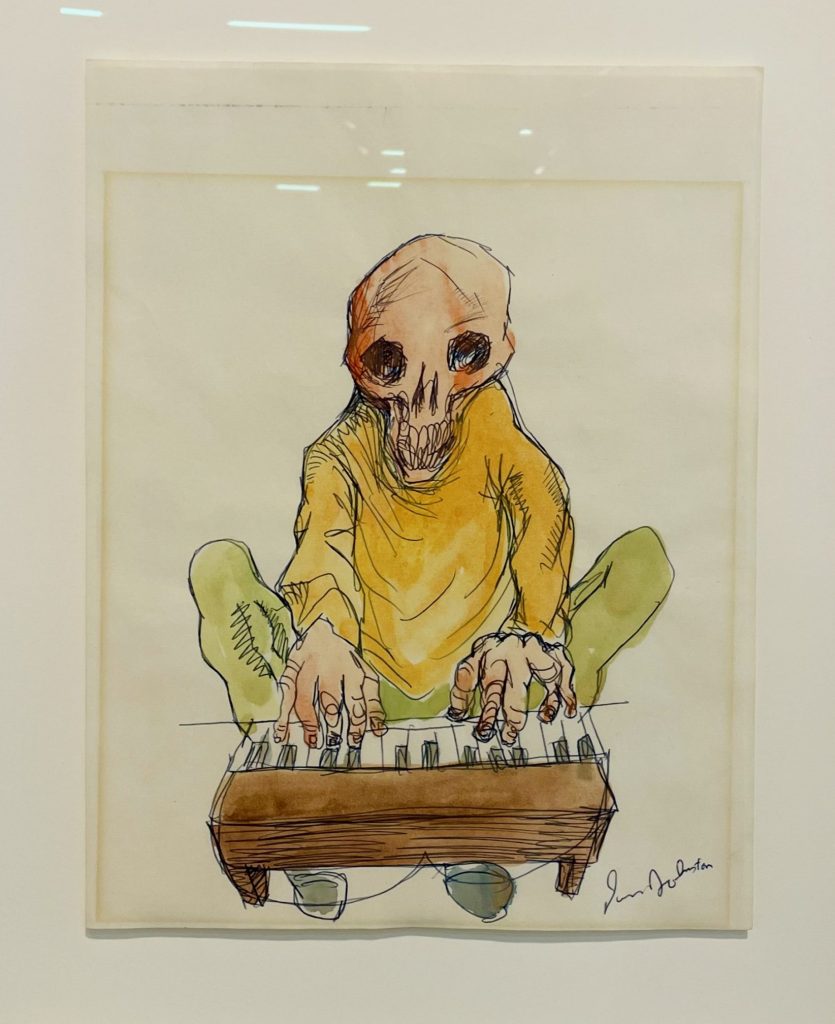
With a huge, messy collection of EPs and albums in his discography, lofi self-taped recordings and serious struggles with mental health, Daniel Johnston checks all the boxes for artists categorized into the “outsider” music genre.
Artists in this unofficial category, often driven to create music out of self-prophetic callings and not out of contractual obligations, have an unconventional sound and look to their art. Getting past the first impression of the strangeness and eccentricity of their work allows the observer to experience a new perspective on the world.
If you want to dive deeper into the world of outsider music and the fine line between creativity and trauma, I recommend this documentary on origins of this genre and this short film about Johnston’s embodied manic schizophrenia.
From his famous mural promoting an album titled “Hi, How Are You?” on a now out-of-business indie record store on Guadalupe Street, to the misery and hope depicted in his homemade recordings and sketches, Daniel Johnston openly shared his vulnerability with the world for all to see.


